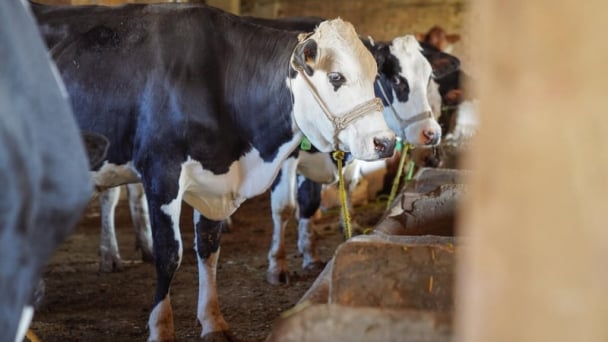May 24, 2025 | 16:23 GMT +7
May 24, 2025 | 16:23 GMT +7
Hotline: 0913.378.918
May 24, 2025 | 16:23 GMT +7
Hotline: 0913.378.918
U.S. corn and soybeans experience the same summer weather each year, which is why supplies of both tend to move in the same direction. Conditions were imperfect this summer and yields have disappointed versus prior expectations, but a decade high in corn acres helped pull off the record crop.
The U.S. Department of Agriculture pegs total U.S. corn supplies in 2023-24 to rise 10% on the year, while soybean inventory is seen shrinking 3%. The most recent similar instance is 2007-08, when U.S. farmers were incentivized to plant more corn based on new renewable fuel mandates related to corn-based ethanol.
The 2007-08 rise in corn and fall in soybean supplies was policy-driven, and the only other recent, directionally similar year was 2003-04, when the U.S. soybean crop fell victim to rare, widespread pest issues as well as dry weather.
But there were no such extenuating circumstances in 2023-24, suggesting market prices late last year and early this year were too heavily signaling for corn acres over soybeans. Corn plantings in 2023 reached nearly 95 million acres, about 5% more than the recent average.
A change is likely coming in 2024, though, as the biggest shifts in U.S. acres, specifically lower corn and higher beans, are observed following years with a significant jump in corn stocks. Some of these years include 2008, 2014 and 2017.
USDA’s long-term projections issued earlier this month suggest just that, pegging 2024 U.S. corn acres at 91 million and soybeans at 87 million versus 83.6 million in 2023. However, those are similar to the early acreage placeholders of the last couple years, so their weight is questionable.
High crop yields pad stockpiles, but acreage differences in recent years seem to have been the driving force when it comes to the actual supply impacts. That has tightened the soybean situation as the market has been more optimistic about the oilseed than the U.S. farmer.
In the last six years, the pre-planting March trade estimates for U.S. soybeans overshot the actuals by a combined 22.2 million acres, which is worth about 1.1 billion bushels of production if using a conservative 50 bushel-per-acre yield. Ten million of those acres were in 2019 alone.
That compares with predicted 2023-24 U.S. soybean ending stocks of 245 million bushels.
Corn has also lost acres in the last six years relative to original market expectations but only by a net sum of 5.2 million acres, worth about 840 million bushels with a conservative yield of 176 bpa. U.S. corn ending stocks in 2023-24 are seen at 2.16 billion bushels.
Interestingly, USDA in the couple of years leading up to 2007-08 had also overestimated U.S. soybean acres in March and undershot corn.
But soybean acres could have their year in 2024 as Chicago soy futures, both nearby and deferred, are trading at the highest levels for the date versus corn in several years. Corn prices throughout 2023 have taken their biggest tumble in ten years.
The Crop Watch producer in North Dakota, an acreage swing state, says soybeans currently have a small profit advantage over corn for his 2024 plans. Soybeans also require fewer inputs, which the producer feels are too expensive versus the current price of corn.
The high U.S. corn, low bean supply scenario for 2023-24 could drift a bit more toward center as the marketing year’s end approaches in August. But any changes will likely have to wait until at least early next year as USDA does not typically make large U.S. revisions in its December report.
(Reuters)

(VAN) Alt Carbon has raised $12 million in a seed round as it plans to scale its carbon dioxide removal work in the South Asian nation.

(VAN) Attempts to bring down the price of the Japanese staple have had little effect amid a cost-of-living crisis.

(VAN) Fourth most important food crop in peril as Latin America and Caribbean suffer from slow-onset climate disaster.

(VAN) Shifting market dynamics and the noise around new legislation has propelled Trouw Nutrition’s research around early life nutrition in poultry. Today, it continues to be a key area of research.

(VAN) India is concerned about its food security and the livelihoods of its farmers if more US food imports are allowed.

(VAN) FAO's Director-General emphasises the need to work together to transform agrifood systems.

(VAN) Europe is facing its worst outbreak of foot-and-mouth since the start of the century.